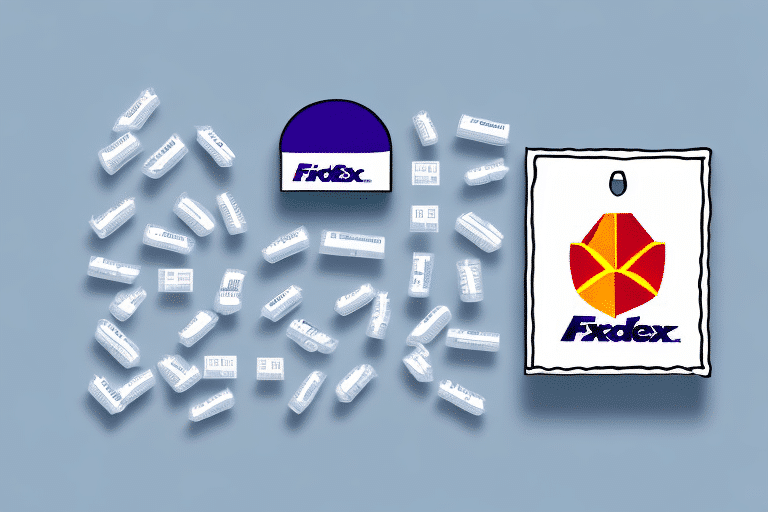How to Complete a Dangerous Goods Declaration with FedEx Ship Manager
Shipping hazardous materials requires meticulous planning and strict adherence to international regulations. A Dangerous Goods Declaration is a critical legal document that outlines the type and quantity of hazardous materials being shipped. This declaration ensures the safe transport of these materials, protecting human health, property, and the environment.
Why a Dangerous Goods Declaration is Essential for Shipping
The primary purpose of a Dangerous Goods Declaration is to safeguard everyone involved in the transportation process. Hazardous materials can pose significant risks if not handled correctly, including threats to human health, property damage, and environmental harm. Accurate information in the declaration helps mitigate these risks and ensures compliance with international regulations, thereby avoiding costly fines and legal repercussions.
Safety and Compliance
Proper documentation ensures that hazardous materials are transported safely, reducing the likelihood of accidents and exposures. Compliance with regulations such as the International Maritime Dangerous Goods (IMDG) Code and the International Air Transport Association (IATA) Dangerous Goods Regulations is mandatory for international shipping.
Legal Requirements
Failure to provide accurate Dangerous Goods Declarations can result in severe penalties, including fines and shipment delays. Regulatory bodies like the U.S. Department of Transportation (DOT) and the European Maritime Safety Agency (EMSA) enforce these requirements to maintain high safety standards.
Understanding the Hazards of Shipping Dangerous Goods
Before shipping any hazardous materials, it's crucial to comprehend the potential risks involved. Hazardous materials can cause harm to individuals, damage property, and negatively impact the environment. Common hazardous materials include:
- Explosives
- Flammable Liquids
- Corrosive Substances
- Toxic Gases
Each type of hazardous material has specific properties and hazards that must be carefully managed during transport.
Mode-Specific Risks
The risks associated with shipping hazardous materials vary depending on the mode of transportation. For example, air transport has stricter regulations compared to ground transport due to the higher risks involved. Understanding these differences is essential for ensuring compliance and safety.
FedEx Ship Manager: A Comprehensive Solution for Shipping Dangerous Goods
FedEx Ship Manager is a robust tool designed to simplify the process of shipping hazardous materials. It allows users to create, manage, and track Dangerous Goods Declarations efficiently. Key features include:
- Electronic creation and submission of declarations
- Printing of necessary labels and documents
- Real-time tracking of shipments
- Integration with other shipping tools for streamlined operations
By utilizing FedEx Ship Manager, both corporations and individuals can ensure their hazardous shipments are handled safely and in compliance with all relevant regulations.
Additional Features
Beyond managing Dangerous Goods Declarations, FedEx Ship Manager offers tools for creating shipping labels, scheduling pickups, and tracking packages in real-time. Its user-friendly interface makes it accessible even for those new to shipping hazardous materials.
Setting Up Your FedEx Ship Manager Account for Dangerous Goods Declarations
To begin using FedEx Ship Manager for Dangerous Goods Declarations, follow these steps:
- Create or log into your FedEx account.
- Navigate to the Ship Manager section.
- Complete the registration process to access the platform.
- Familiarize yourself with the user interface and available tools.
Ensure that all information entered is accurate, including the classification of dangerous goods, packaging details, and necessary permits or licenses. Accurate documentation is vital to avoid fines, shipment delays, and safety hazards.
Step-by-Step Guide to Completing a Dangerous Goods Declaration with FedEx Ship Manager
Once your account is set up, follow these steps to complete a Dangerous Goods Declaration:
- Enter Sender and Recipient Information: Provide accurate details to ensure proper handling and delivery.
- Identify and Classify Hazardous Materials: Use FedEx Ship Manager’s classification tools to categorize your materials.
- Verify Information: Double-check all entries for accuracy and completeness.
- Print Necessary Documents: Generate and print the declaration, labels, and any other required paperwork.
- Submit for Processing: Submit the declaration through FedEx Ship Manager for approval and shipment.
Always review the FedEx Dangerous Goods Guide or consult with a FedEx Dangerous Goods Specialist to ensure compliance with all regulations.
Identifying and Classifying Your Dangerous Goods for Accurate Declarations
Accurate identification and classification of hazardous materials are crucial for safe transport. Misclassification can lead to improper handling, increasing the risk of accidents and regulatory penalties.
- Understand Material Properties: Research the physical and chemical properties of your materials.
- Use Classification Tools: Utilize FedEx Ship Manager’s built-in tools to ensure correct classification.
- Consult Official Guides: Refer to resources such as the International Civil Aviation Organization (ICAO) Dangerous Goods for authoritative classification guidelines.
Remember that some hazardous materials, like lithium batteries, may not have obvious danger signs but still require careful handling and proper documentation.
Packaging and Labeling Requirements for Shipping Dangerous Goods with FedEx
Proper packaging and labeling are essential to ensure the safe transport of hazardous materials. FedEx has specific requirements that must be followed to protect the materials and comply with regulations.
- Use Approved Packaging: Ensure that all packages meet the standards set by regulatory bodies.
- Label Correctly: Apply the appropriate hazard labels and markings to each package.
- Secure Packaging: Use suitable packing materials to prevent leaks, spills, or damage during transit.
Non-compliance with packaging and labeling requirements can result in severe consequences, including fines and shipment delays. For detailed guidelines, refer to the FAA Hazardous Materials Packaging regulations.
Tips for Ensuring Compliance with Regulations When Shipping Dangerous Goods
Maintaining compliance with hazardous materials regulations is crucial for safe and efficient shipping. Here are some tips to help ensure compliance:
- Stay Informed: Keep up-to-date with the latest regulations from authoritative sources like the International Maritime Dangerous Goods (IMDG) Code and the IATA Dangerous Goods Regulations (DGR).
- Accurate Documentation: Ensure all paperwork, including declarations and labels, is accurate and complete.
- Proper Packaging: Use appropriate packaging materials and methods as specified by regulations.
- Employee Training: Train all personnel involved in handling hazardous materials on proper procedures and emergency response actions.
Utilizing FedEx Ship Manager for Compliance
FedEx Ship Manager can aid in maintaining compliance by providing tools and resources for accurate documentation, classification, and labeling of dangerous goods.
Common Mistakes to Avoid When Completing a Dangerous Goods Declaration with FedEx Ship Manager
Even with advanced tools like FedEx Ship Manager, errors can occur. Common mistakes include:
- Inaccurate Information: Providing incorrect details about the hazardous materials.
- Incomplete Paperwork: Failing to include all required documents and declarations.
- Incorrect Packaging and Labeling: Using non-compliant packaging materials or mislabeling packages.
- Regulatory Oversights: Not staying updated with the latest regulations and requirements.
To avoid these mistakes, always double-check your entries, keep abreast of regulatory changes, and utilize the resources provided by FedEx Ship Manager effectively.
Conclusion
Shipping hazardous materials is a complex process that demands careful planning and strict adherence to safety regulations. A Dangerous Goods Declaration is essential for ensuring the safe and compliant transport of these materials. Tools like FedEx Ship Manager streamline the process, making it easier to create, manage, and track your declarations.
By accurately classifying and identifying hazardous materials, following packaging and labeling requirements, and avoiding common mistakes, you can ensure successful and safe transportation of dangerous goods. Additionally, always research and comply with the regulations of the destination country to prevent delays and legal issues. For optimal safety and compliance, consider working with a certified Dangerous Goods Specialist.
For more information on hazardous materials regulations, visit reputable sources such as the International Civil Aviation Organization (ICAO) and the International Maritime Dangerous Goods (IMDG) Code.




















